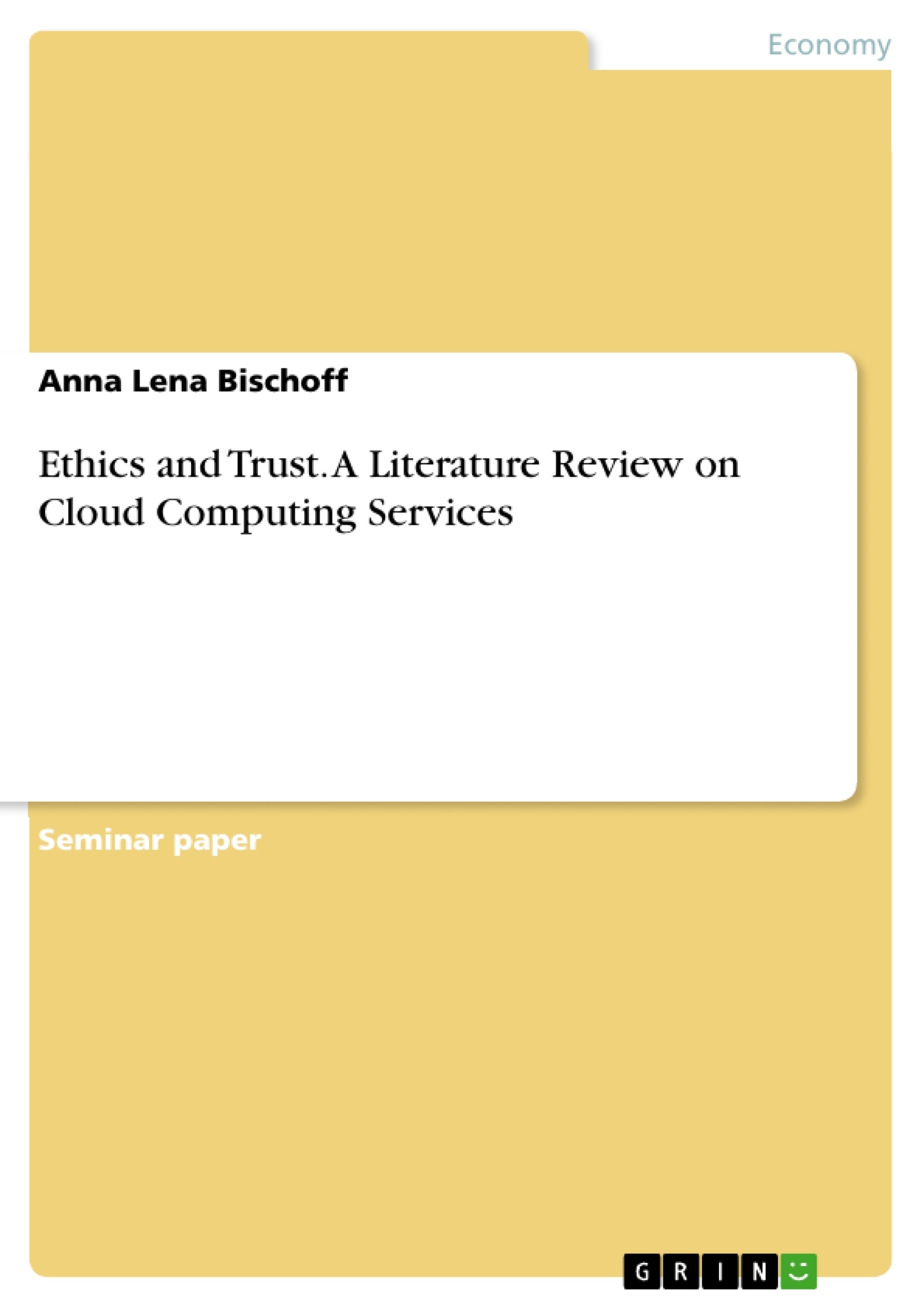Even though security issues when using cloud computing services have been looked at from a technical perspective, research has failed to explain why consumers use cloud services extensively despite their distrust. Observations have been made that users are in a dilemma where they use a service they are not comfortable with. Besides trust, the ethical perspective of all stakeholders in cloud computing has not been discussed or connected to the issue of trust.
The unease consumers feel when signing up for a cloud service could be transformed from a dilemma into a competitive advantage. Therefore, it is of high interest to cloud service providers to understand how they can gain competitive advantage over competitors by building consumer relationships based on trust and ethical norms. The results of this literature review show that making use of insights into cloud computing issues and awareness for trustful, ethical relationships with the customer, service providers can create competitive advantage. Following ethical norms and building trust with customers enables companies to gain first-mover-advantages in the field of cloud computing services. They can successfully distance themselves from competitors by promoting marketing campaigns that emphasize their high ethical standards and treatment of users.
This paper adds the dimension of ethics to the dilemma of mistrust in cloud computing, exploring whether this is a key influence on consumer trust, since there was a research gap discovered in researching a trustful provide-user relationship as well as an ethical perspective in cloud computing.
Table of Contents
- Introduction
- Method
- Literature review
- Cloud computing
- Cloud computing and the issues arising from this new technology
- Correlation of cloud computing and forced acceptance
- Cloud computing and the issue of user trust
- Cloud computing and the lack of an ethical perspective
- The ethical responsibilities of users
- The ethical responsibilities of the provider
- Cloud computing
- Conclusion and discussion
Objectives and Key Themes
This literature review aims to explore the ethical dimensions of consumer trust in cloud computing services, specifically focusing on the provider-user relationship. By examining the existing research, this review seeks to understand how ethical considerations can influence consumer trust and how cloud service providers can leverage this knowledge to gain competitive advantage.
- The growing importance of cloud computing and its impact on daily life.
- The ethical responsibilities of both users and providers in the context of cloud computing.
- The role of trust in consumer adoption of cloud services.
- The potential for ethical considerations to drive competitive advantage in the cloud computing market.
- The need for further research on the interplay of ethics, trust, and consumer behavior in cloud computing.
Chapter Summaries
The introduction highlights the significance of cloud computing and its impact on daily life. It also points to the growing concerns regarding privacy, data security, and the lack of trust surrounding cloud services. The chapter emphasizes the need to understand the ethical considerations within the provider-user relationship.
The methodology section details the research process, outlining the search tools, keywords, and selection criteria employed in the literature review. It explains the focus on customer-service provider relationships and the exclusion of technical security mechanisms, emphasizing the social science aspects of the study.
The literature review section explores various aspects of cloud computing, including the challenges and opportunities associated with this technology. It examines the correlation between cloud computing and forced acceptance, as well as the issue of user trust in the context of data security and privacy concerns. The chapter also delves into the ethical responsibilities of both users and providers, highlighting the importance of ethical norms in building trust and fostering sustainable relationships.
The conclusion and discussion section synthesizes the findings of the literature review, identifying key research gaps and proposing avenues for further exploration. It emphasizes the potential for companies to gain competitive advantage by building trust and ethical relationships with their customers.
Keywords
This literature review focuses on the intersection of ethics, trust, and cloud computing. Key themes include consumer behavior, competitive advantage, ethical standards, privacy concerns, data security, provider-user relationships, and the impact of cloud computing on daily life. The review explores the importance of building trust and ethical relationships in the cloud computing market, highlighting the role of ethical considerations in driving consumer adoption and shaping the future of cloud services.
- Quote paper
- Anna Lena Bischoff (Author), 2017, Ethics and Trust. A Literature Review on Cloud Computing Services, Munich, GRIN Verlag, https://www.grin.com/document/354476



